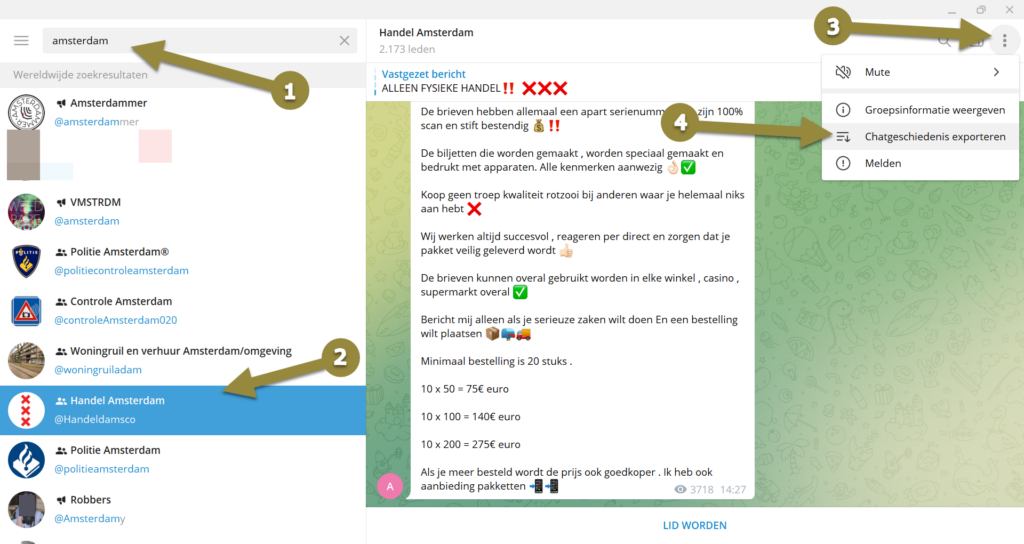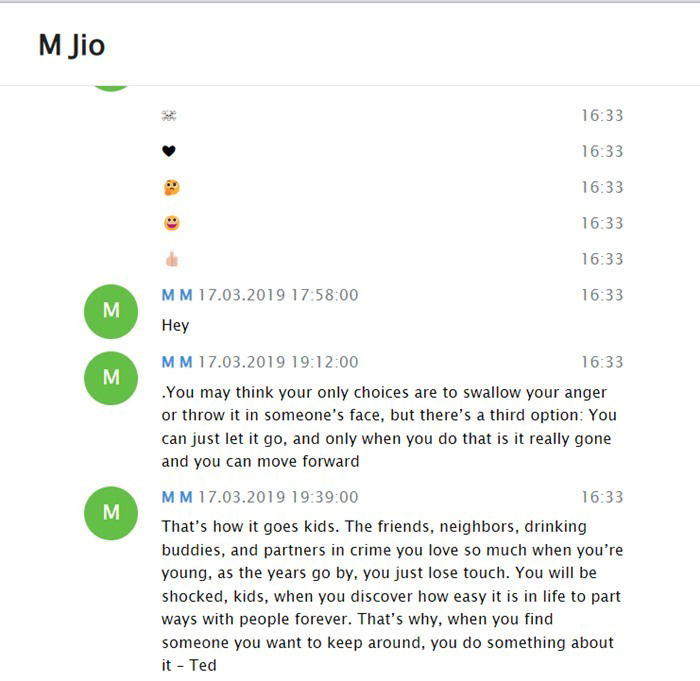Have you ever found yourself needing to save important conversations or media from your Telegram chats? Whether it's for keeping cherished memories or simply to document important information, exporting Telegram chats can be a lifesaver. In this guide, we'll sift through the process to make it as smooth as possible, ensuring you know exactly how to use
Understanding Telegram's Export Feature

Telegram's export feature is designed for both individual chats and group conversations, offering a straightforward way to back up your messages, media, and other chat details. Before diving into the steps, it’s essential to understand what this feature can do for you and how it works.
Here's a quick overview of the key aspects of Telegram's export feature:
- Scope of Export: You can export chats, voice notes, photos, videos, documents, and other types of media shared within the conversations.
- Format: The exported data is usually saved as an HTML file, making it easy to view in a web browser.
- Platform: This feature is accessible via the Telegram Desktop app, ensuring you have the right software to carry out the export process.
- Granular Control: Users can choose specific chats to export, allowing for more targeted backups.
To start using this feature, here's a simplified table of the steps to follow:
| Step | Description |
|---|---|
| 1 | Open the Telegram Desktop app. |
| 2 | Select the chat you wish to export. |
| 3 | Go to Settings > Advanced > Export Telegram Data. |
| 4 | Customize your export options, such as selecting the type of media. |
| 5 | Click Export and wait for the process to complete! |
With this understanding, you’re now ready to learn the specifics of exporting chats and media efficiently! Stay tuned for the next sections where we delve deeper into each step and some handy tips!
3. Step-by-Step Process to Export Chats

Exporting your Telegram chats can be incredibly useful, whether you’re looking to save important information, keep a backup, or just want a personal record of conversations. Here’s how to do it, step by step.
- Open Telegram on Desktop: First, make sure you're using Telegram Desktop. This method isn’t available on the mobile app.
- Go to Settings: Click on the three horizontal lines in the upper left corner, then select “Settings” from the dropdown menu.
- Access Advanced Settings: In the Settings menu, scroll down and click on “Advanced.” Here, you’ll find various options related to Telegram’s settings.
- Select Export Telegram Data: Under the “Data and Storage” section, look for “Export Telegram Data” and click on it.
- Choose What to Export: You can decide what data you want to export—messages, media files, and more. You can select specific chats or all of them. A handy checklist will help you decide.
- Set the Export Format: Choose the format in which you want your exported data. HTML or JSON are usually your best bets—HTML is easier to read.
- Initiate the Export: Once you’ve made your selections, click on “Export.” Telegram will start compiling your data.
- Download the Files: After the export is complete, you’ll receive a link to download your files. Just click on it, and your chats will be safely stored!
And just like that, your Telegram chats are ready for you! Remember, this is an excellent way to keep your memories and important information secure.
4. Exporting Media Alongside Chats

When exporting your Telegram chats, media files often carry just as much significance as text messages, and it's essential to ensure they’re included in your export. Here's how you can do that:
- Select Media Files: When you're choosing what to export, make sure to check the box for media files. Telegram allows you to include photos, videos, and even documents shared in your chats.
- Specify Media Formats: You may have options to specify which media formats you want. For example, you might only need images or videos from a particular chat. Look through the settings for any filters.
- Integration in Your Export: Telegram organizes the exported media alongside the related text, ensuring that context isn’t lost. This is particularly handy if you want to recall the exact moment a photo was shared in conversation.
- Check the File Size: Be aware that including a large number of media files can increase the export size significantly. If you're on a limited data plan or storage space, it might be worth choosing selectively.
Once your export is done, you'll find all the media neatly embedded within the exported chat files. This means you won’t have to sift through endless folders to find the associated files later. It’s all in one place—easy and efficient!
Common Issues and Troubleshooting Tips
Exporting Telegram chats and media is usually a smooth process, but sometimes you might encounter a few bumps along the way. Here’s a friendly guide to help you troubleshoot some common issues you may face:
- Slow Export Processes: If the export seems to be taking longer than expected, it could be due to a large volume of messages or media files. Consider breaking them down into smaller chunks for a faster export.
- Incomplete Exports: Sometimes, the exported files might not include everything you anticipated. Double-check your export settings to ensure that you’ve selected all necessary chats and media. If an export is still incomplete, try restarting the process.
- File Format Issues: After exporting, you might find that some files, especially media, aren't opening properly. Ensure you have the correct software to read different file formats. For example, images should open in an image viewer, while .HTML files need a web browser.
- Permission Errors: If you’re using the Telegram desktop app and encountering permission errors, make sure that you have the necessary permissions to access folders where the exported files are saved. Run your app as an administrator if necessary.
- Network Interruptions: A flaky internet connection can disrupt the export process, especially for media-heavy chats. Try to ensure a stable connection and consider switching to a wired network if Wi-Fi issues persist.
By addressing these common issues, you can make your Telegram exporting process much smoother. Don’t forget that the Telegram community can be a fantastic resource as well, so feel free to check forums for specific problems!
Conclusion
In a world where communication is evolving rapidly, having a reliable way to export and save your Telegram chats and media is essential. Whether you're archiving meaningful conversations, backing up precious memories, or just clearing up some space in your chat history, knowing the ins and outs of the export process can save you a lot of time and trouble.
Remember that:
- The Export Telegram Data feature is straightforward and user-friendly.
- You can tailor your exports to include specific chats, and you can choose the format that suits your needs best.
- Being aware of common issues will help you tackle any obstacles quickly.
Take the time to familiarize yourself with the process, experiment with different settings, and don’t hesitate to reach out for help if needed. The more you engage with these tools, the more adept you’ll become at managing your digital conversations. Happy exporting!










